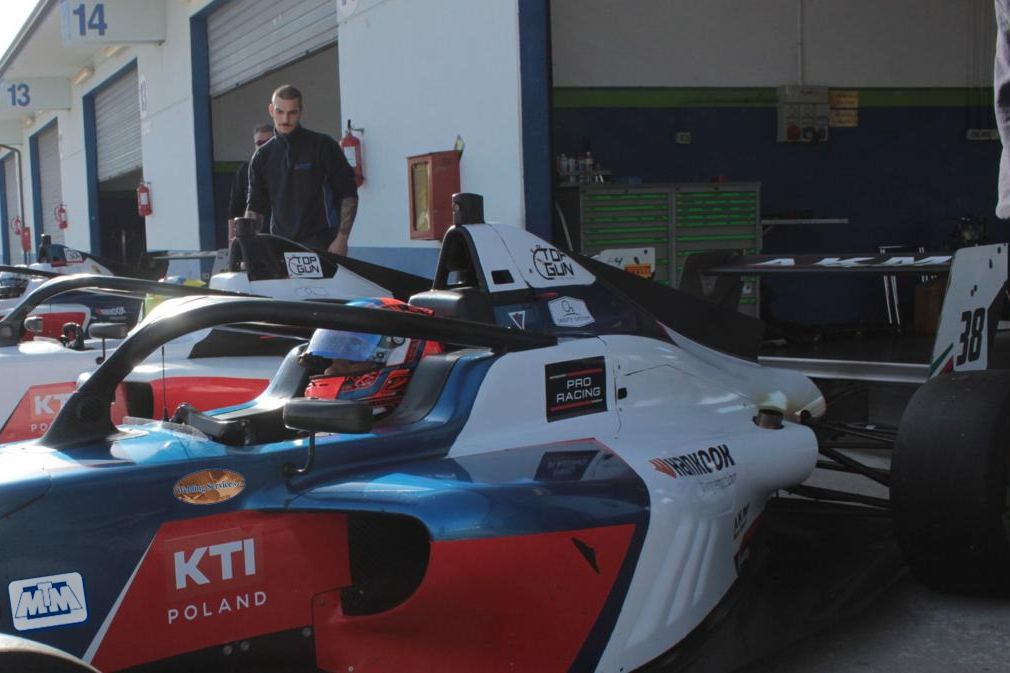
Photos: Italiaracing
Launched in 2021 by former F1 star Giancarlo Fisichella, Top Gun by Pro Racing is a racing school helping drivers into F4. Italiaracing’s Mattia Tremolada joined one of its quarterly camps
Giancarlo Fisichella and Marco Cioci’s new business is Top Gun by Pro Racing, a racing school that with a brand new approach wants to help karters make their first s aeps in single-seaters. But how different really is their approach compared to other schools? The best way to find out was to join in.
After my first experience in a single-seater at Cremona, testing Tatuus’s first and second-generation Formula 4 cars, the time has come for me to be taught the basics of driving, which until now I had learned by myself and mostly practiced on the simulator and on rental karts. What better opportunity than to put that experience to the test with Top Gun.
Both Fisichella and Cioci have had stellar racing careers. Cioci raced in Italian Formula 3000 and made one appearance in Indy Nxt before switching to sportscars and winning the Vallelunga 6 Hours six times, taking the 2008 International GT Open GTS class title and racing for Ferrari’s works sportscar team AF Corse across the world.
Since 2010, Fisichella has also been part of Ferrari’s sportscar fold with AF Corse, twice winning the Le Mans 24 Hours’ and Petit Le Mans’ top GT clas, but he’s most famous for a 231-race Formula 1 career that included three wins and four poles.
Today, they offer their experience to walk karters through their very first steps in a single-seater, teaching them the basics of driving with a personalised path.
“The idea was born out of a necessity,” explains Cioci, who is the enthusiastic runner of the Pro Racing management firm which guides the careers of Brazilian F4 champion Pedro Clerot [pictured below], new Ferrari junior Aurelia Nobels and Italian F4 driver Valerio Rinicella, all former Top Gun students.
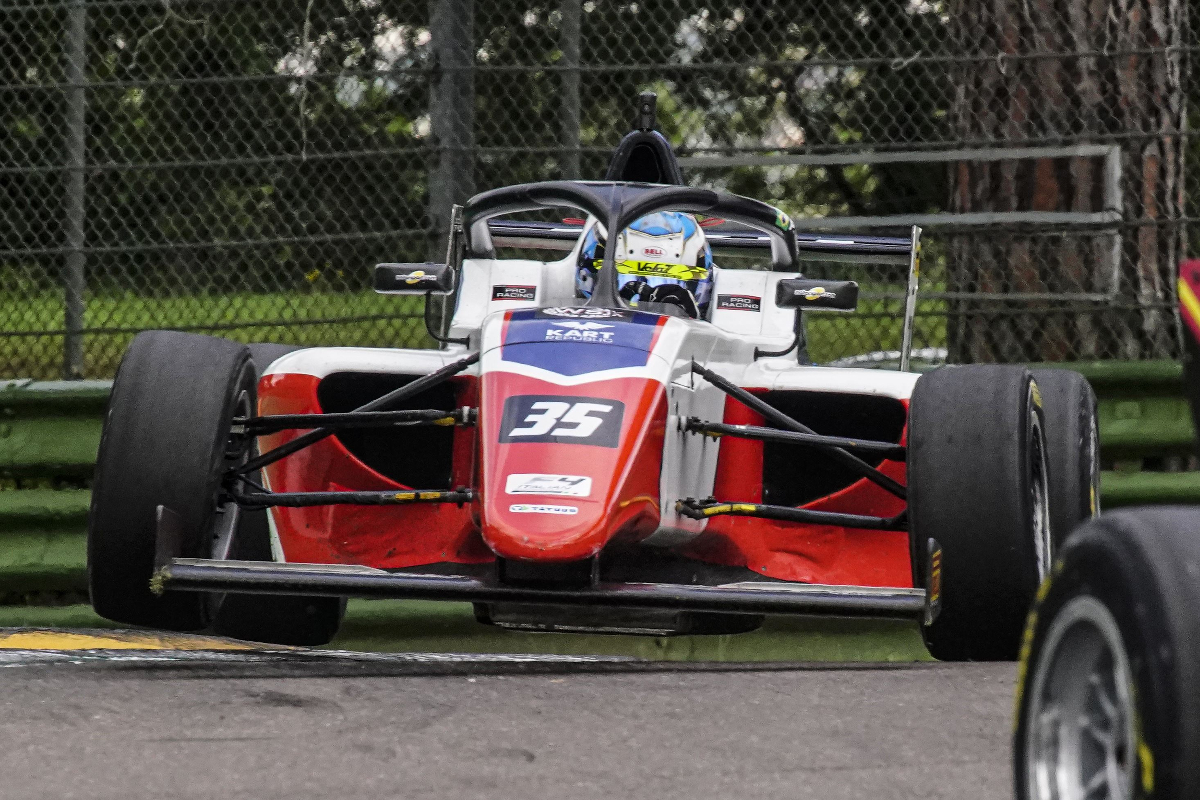
Photo: ACI Sport
“In our opinion, there was a lack of a structure like this that would be dedicated to cleaning up all the mistakes that a driver who switches from karting to single-seaters inevitably has.
“Rather than correcting them, as many guys do, covering many kilometres and thus spending a lot of money, Top Gun focuses on quality, on immediately cleaning up the grossest mistakes, teaching the basics which then allow the kids to drive with a consolidated technique with the teams they prefer. At that point, it then makes sense to make kilometres and gain experience, but this must happen once we are certain that we have already corrected the problems that were perhaps covered in karts or that had not emerged as they did in the first tests in the single-seaters.”
But how does Top Gun work, how does it distinguish itself from other schools or from the work that a traditional team does to also eliminate errors at the wheel? To find out, I took part in a school day at Magione (one of the circuits that Top Gun, which mainly alternates between Italy and Spain, weans its drivers) just like my young karting colleagues.
An original approach
From the very first approach to the circuit, Top Gun offers its drivers a challenge. Instead of the traditional track walk, the students are immediately put behind the wheel of a road car. Here the driver coach accompanies them on a first lap of the track, illustrating the correct trajectories. On this occasion Cioci is the lead coach, and joined by Italian F3 and GT race-winner Michele Rugolo and former GP2 driver Ferdinando Monfardini (both highly experienced instructors especially among the ranks of Ferrari’s official private automobile club). The group of instructors Top Gun calls upon also includes Luca Filippi, Vitantonio Liuzzi, Leonardo Pulcini and Richard Verschoor to name a few.
Then the instructor gets out of the car and the young drivers start taking turns driving. If for an adult driving a road car is part of the daily routine, then for a child it is something extraordinary. And they find themselves having to manage a rental car, always with a manual gearbox, discovering the track lap after lap at speed.
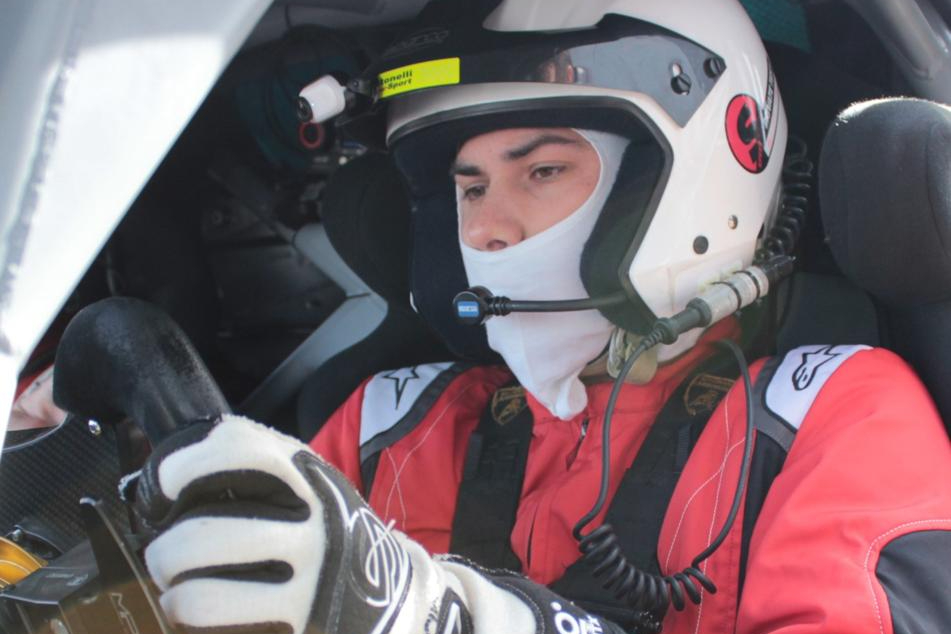 Power shock
Power shock
After warming themselves up, the next step for these single-seater wannabes is to get behind the wheel of a racing car. But before jumping in the cockpit of the Tatuus T-421s of AKM Motorsport (Top Gun uses the cars of various Italian and Spanish F4 teams), who also brought along Ferrari’s former chief track engineer and driver academy manager Luca Baldisseri, the students instead find themselves having to manage a car with a much higher power output.
To get them used to the torque of a racing car, they are in fact put at the wheel of a Lamborghini Huracan Super Trofeo Evo, which has a powerful V10 that produces more than 600hp. At full power (with only the traction control active from the various driver aids that the car has), the students take to the track one after the other with Monfardini in the passenger seat helping them find the right lines (compared to the road car) and further increase their confidence with the track.
Driving a GT car also allows them to understand how a racing car behaves on the track. Being much heavier than a single-seater, the Huracan highlights load transfers, which are less pronounced in F4, but just as important to know and manage. A valuable lesson for those who are making their very first outings on track. The Huracan was specifically chosen for my test day on the basis of the Magione circuit’s characteristics, while on tracks with higher average speeds a Radical prototype is usually used as it performs better at speed.
Furthermore, thanks to his experience as an instructor, Monfardini immediately manages to identify the most obvious mistakes of each driver, which he refers to Rugolo, who immediately gets to work with that driver before the next run.
In my case, Monfardini recognises good braking, but the fact that I have little confidence leads me to anticipate it. In this way I kill the speed of the car and find myself too slow at the apex and threfore accelerating early. With the car still turning, that leads to understeer that is carried from mid-corner to the exit.

Mattia in the Lamborghini
Time to jump in the F4 car
After the first few laps on the Huracan, it’s time to jump into the cockpit of one of AKM’s three F4 cars. Each driver starts with a short and slow first stint to check that the driving position is correct. Being at the very first outings in a single-seater, this aspect should not be underestimated, and there is not the luxury of a moulded seat fit that full-time drivers have.
If everything is fine, the driver can start with the first exercise, which is a 10-lap stint where the concentration is on braking and on starting to fix the errors that emerged in the Lamborghini and have already been analysed with Rugolo.
What the instructors expect from the drivers is to focus on the “shape” of the braking, which will then be analysed on the telemetry. For this first day, the drivers will only be able to see the braking and steering data and compare them with the team’s reference, while everything else (such as throttle application and speed graphs, and the onboard video) will not be shown to them until the day after.
So in the first session I focus on braking as much as possible. I try to reach the so-called peak by hitting the pedal hard, to then lighten my foot, which remains leaning on the brake almost to the apex, a technique called trail-braking. Slowly I manage to increase the peak, gaining more and more confidence and trying to concentrate on the braking shape.
If the driver brakes in the correct way, the braking graph should look like a triangle, but if he does not reach the right braking peak, he then has to hold the maximum intensity of the force for several seconds. In this scenario the telemetry design therefore resembles a trapezoid rather than a triangle and nothing makes an engineer more upset than this.
At the end of the 10 laps, Baldisseri asks for my laptime, but honestly Top Gun’s format doesn’t lead to caring about the reference, at least initially. Which, obviously, represents one less distraction for the kids, who can concentrate on the technique.
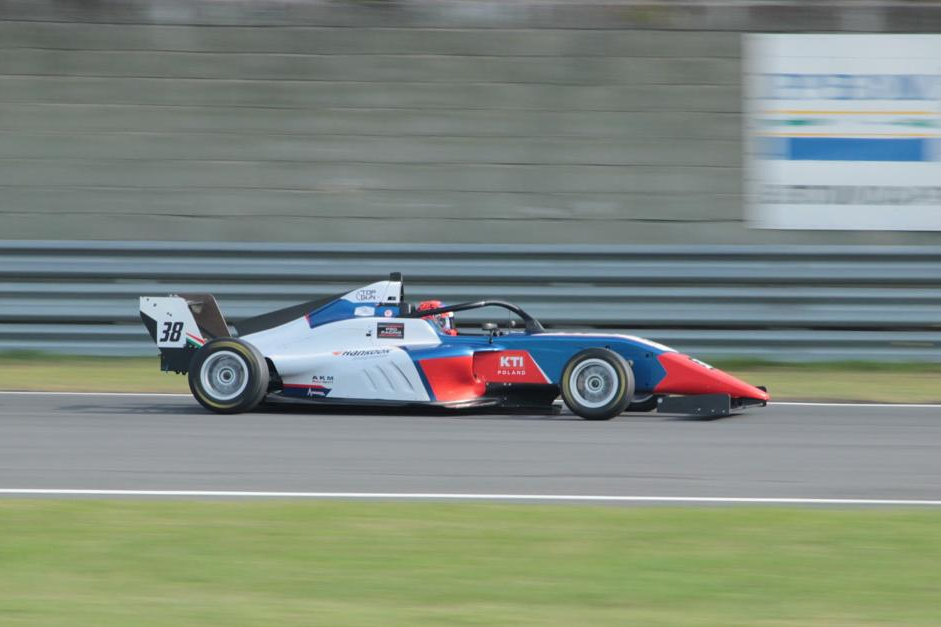 As soon as they get out of the car, the drivers are asked to fill in a form in which they must indicate the gear used and the braking point of each corner. Writing down what has just been done may seem trivial, but once again it is not so for kart drivers, who are used to racing on the same tracks again and again in a year.
As soon as they get out of the car, the drivers are asked to fill in a form in which they must indicate the gear used and the braking point of each corner. Writing down what has just been done may seem trivial, but once again it is not so for kart drivers, who are used to racing on the same tracks again and again in a year.
Analysing the data, Rugolo and Baldisseri are quite happy with the shape of my braking, even if I still don’t have great confidence with the speed of these cars and, especially when exiting turn one, I find myself stepping on the throttle too soon.
Therefore having an acceptable braking technique is what I will have to concentrate on for the rest of the day. Brake later, carry more speed through the corners and force myself to wait for the right moment to hit the throttle.
At the end of the morning, all the drivers gather to discuss the mistakes made in the first sessions and the references taken for the braking point with the instructors. In fact, the karters were not given any reference before taking to the track. In this way everyone focused on the technique and, as confidence grew, moved their reference closer and closer to the turn.
It’s also interesting to see how everyone found different signals. In addition to the boards indicating the distance from the corner (150, 100 and 50 metres), there are service roads, kerbs and asphalt changes that might be taken as a reference and everyone has found their own.
To correct mistakes
In the afternoon it’s time to get back into action, alternating between the F4 car and the Lamborghini. At first I jump back in the Tatuus and, after talking to the engineer and coach, try to fix the mistakes that emerged in the morning. I start to improve my laptime quite a lot from the 1m13.94s I managed in the first run.
I trust the brakes more and more, move the braking point further forward and in the first 10 laps of the second session my benchmark drops.
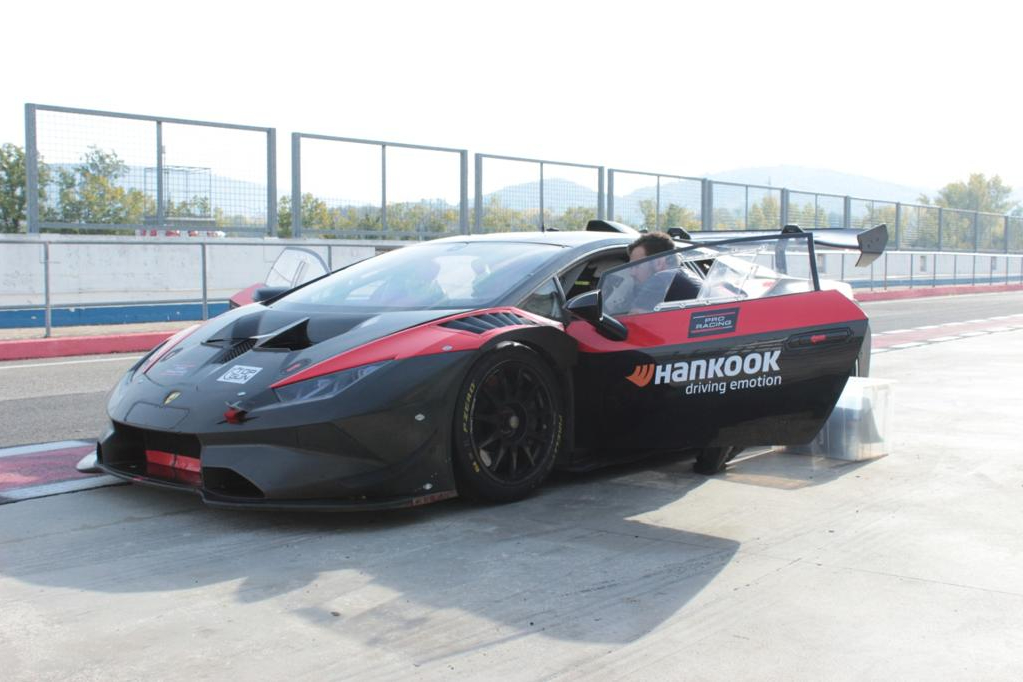 A second has been gained by the time I reach a 1m12.92s lap, and then after going back on track for a further eight laps – and with confidence growing exponentially – I set a 1m12.19s (for reference, the unofficial track record with a Gen2 F4 car is 1m09.3s, set by a driver who raced in the Italian F4 championship in 2022).
A second has been gained by the time I reach a 1m12.92s lap, and then after going back on track for a further eight laps – and with confidence growing exponentially – I set a 1m12.19s (for reference, the unofficial track record with a Gen2 F4 car is 1m09.3s, set by a driver who raced in the Italian F4 championship in 2022).
A nice progression, achieved without thinking about time and above all without distorting the braking shape and all the lessons learned in the morning. I just had to put into practice the advice received and the notions learned. In this way confidence has increased dramatically and laptimes have naturally decreased.
Before the sun sets over Magione, I have time to get back behind the wheel of the Lamborghini. After explaining to me the correct technique for warming up the tyres, to be applied on the F4 as well, Monfardini urged me over the radio to bring ever more speed into the corners.
Braking later, everything comes more naturally and waiting for the right moment to touch the throttle is no longer a problem like it was in the morning. I understand many things, such as that in turn three I don’t bring enough speed with the F4, sacrificing too much the left-hand turn for the following right hairpin.
Final briefing
Once the on-track activity is over, the coaches and the engineer get together to analyse the data of all the drivers, this time using the complete telemetry and also the onboard videos. An in-depth analysis is carried out for each driver and we all discuss together what to improve.
In my case, I can brake five meters later in turns one and two, while in turn three I am much slower than the reference driver. Something I figure it out on my own on the Huracan, but that I wasn’t able to do as I run out of time.
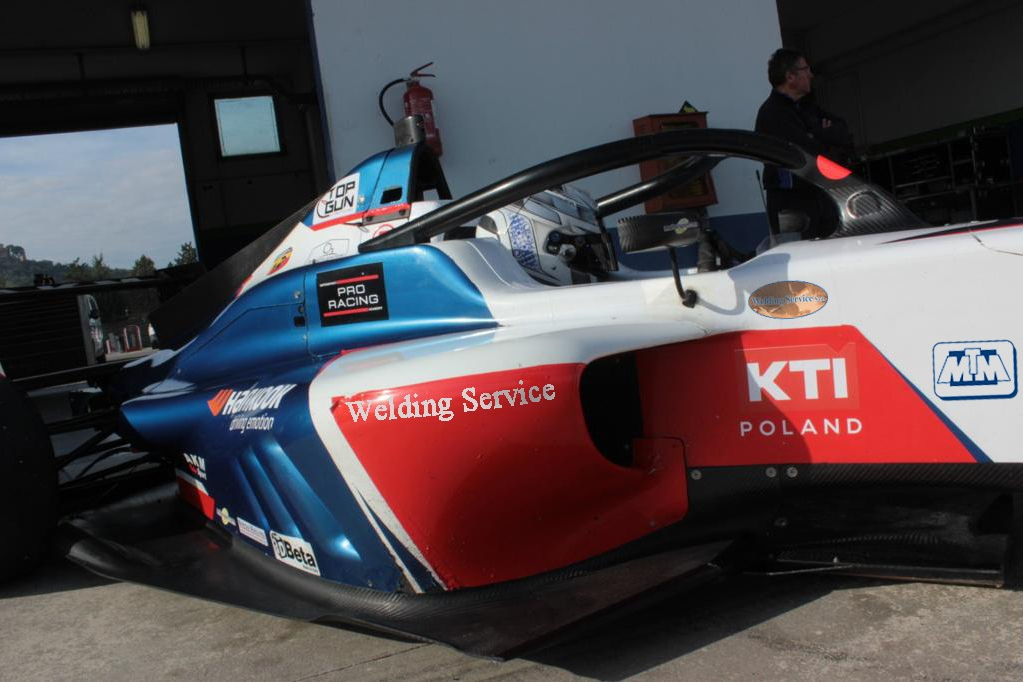 The following day I had to leave for Barcelona to report on the final round of Spanish F4, meaning I missed the second day of Top Gun practice. The karters, on the other hand, after the three sessions held on the first day, had the opportunity to contest a standard weekend, made up of a morning track walk, a 30-minute free practice session, a qualifying session with new tyres and then two race simulations, where the goal is to run as consistently as possible.
The following day I had to leave for Barcelona to report on the final round of Spanish F4, meaning I missed the second day of Top Gun practice. The karters, on the other hand, after the three sessions held on the first day, had the opportunity to contest a standard weekend, made up of a morning track walk, a 30-minute free practice session, a qualifying session with new tyres and then two race simulations, where the goal is to run as consistently as possible.
Between one session and another, the kids will also be able to go through their complete telemetry with Baldisseri, thus learning how to interact with an engineer, a figure that will be repsent throughout their career and with whom it is therefore important to learn how to establish a relationship with.
Conclusion
Recently many drivers have decides to buy an F4 car (or even more powerful single-seaters) of their own so as to rack up as many miles as possible in it. By doing this the laptimes improve, because the confidence with the speed increases, but at the same time without the help of an expert it is difficult to fix the technical defects or make up for the deficiencies the driver has.
Top Gun, on the other hand, allows them to sort out the mistakes in just a few days, laying solid foundations in a driver’s technique right from the very first steps in a single-seater. A basis on which each driver can then build their own speed and experience.
More sports science and track tests
The Winter Olympic sport with single-seater racing’s athletic challenge
When two eras meet: How F4 Gen1 and Gen2 compare in the cockpit